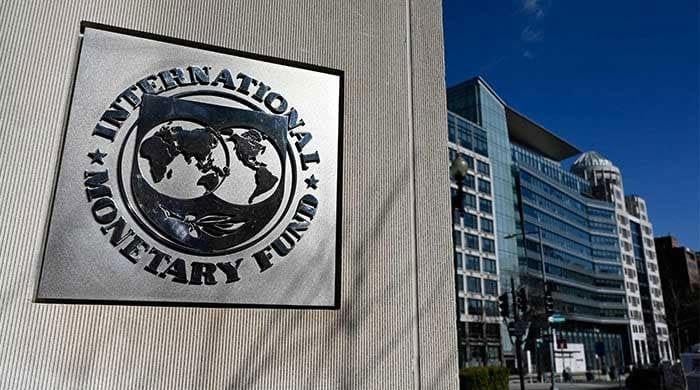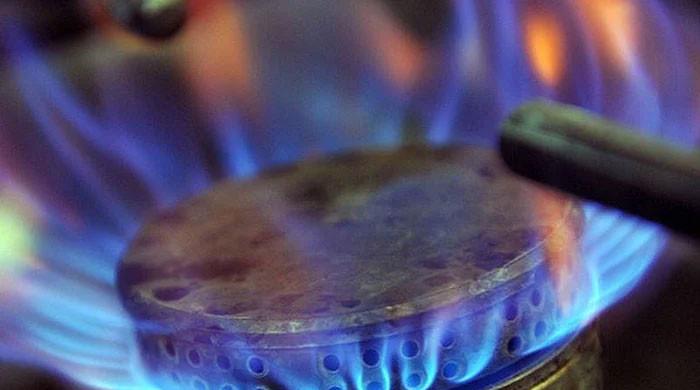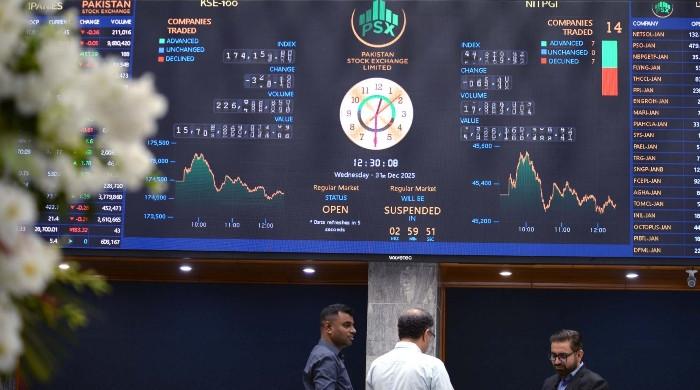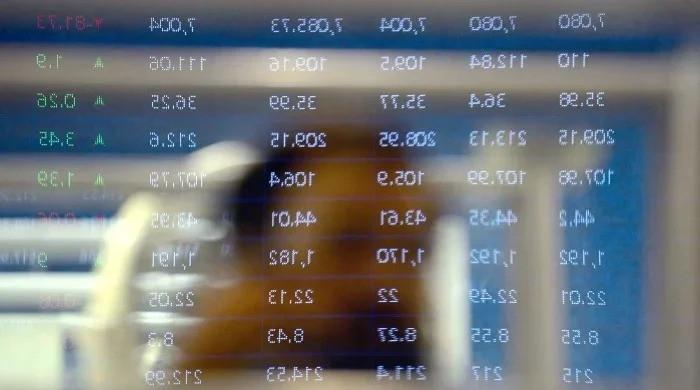Fitch downgrades Pakistan to 'CCC+' as liquidity, policy risks weigh
Agency flags worsening liquidity and policy risks as the main reasons behind the downgrade
October 21, 2022

- Downgrade reflects further deterioration in external liquidity and funding conditions.
- Partly a result of floods that will undermine Pakistan's efforts to rein in twin deficits.
- Company does not typically assign outlooks to sovereign nations with a rating of 'CCC+' or below.
As the country's wobbly economy continues to face headwinds from all sides, Fitch Ratings, on Friday, slashed Pakistan's Long-Term Foreign-Currency Issuer Default Rating (IDR) to 'CCC+' from 'B-', which analysts say does not bode well for the country recovering from super floods.
According to its statement, the company does not typically assign outlooks to sovereign nations with a rating of 'CCC+' or below.
The agency flagged worsening liquidity and policy risks as the main reasons that led to a downgrade.
“The downgrade reflects further deterioration in Pakistan's external liquidity and funding conditions, and the decline of foreign exchange reserves,” Fitch Ratings said.
“This is partly a result of widespread floods, which will undermine Pakistan's efforts to rein in twin fiscal and current account deficits.”
The down-rating “also reflects our view of increased risks of policies potentially undermining Pakistan's International Monetary Fund (IMF) programme and official financial support.”
On foreign exchange reserves, it said the State Bank of Pakistan (SBP) had about $7.6 billion till October 14, which can cover about a month of current external payments.
It also noted that forex reserves had tumbled from over $20 billion at the end of August 2021.
“Falling reserves reflect large, albeit, declining current account deficits (CADs), external debt servicing and earlier foreign exchange interventions by the SBP,” the credit rating agency said.
Before stabilising in the week of October 14, reserves had been falling every week since the disbursement of $1.2 billion from the IMF in the week of September 2, upon the completion of the seventh and eighth reviews of Pakistan's Extended Fund Facility (EFF), the rating agency said.
External deficits
It also noted that the current account deficit reached $17 billion (4.6% of GDP) in the fiscal year that ended in June 2022 (FY22), driven by soaring oil prices and higher non-oil imports on strong private consumption.
Fiscal tightening, higher interest rates and measures to limit energy consumption and imports underpin our forecast for the CAD to narrow to $10 billion (2.7% of GDP) in FY23, despite the hit to export revenue and import needs after the recent floods.
“Lower imports and commodity prices helped to narrow the CAD in recent months, to about $300 million in September,” Fitch said.
Large funding needs
Pakistan's external public debt maturities in FY23 are over $21 billion, mostly to bilateral and multilateral creditors, which mitigates rollover risks, and there are already agreements to roll over some of these.
Quoting authorities, Fitch placed estimated flood damage at $10 billion-30 billion, but reconstruction costs are likely to be lower, as is the impact on Pakistan's twin deficits.
Some new funding
“Pakistan recently received funding commitments of $2.5 billion from the World Bank and Asian Development Bank, although we understand that much of this is repurposed from ongoing programmes,” the statement cited. “It remains unclear to what degree the IMF will be able to relax Pakistan's programme targets, or augment Pakistan's access under the extended fund facility (EFF).”
Policy, IMF programme risks
“We assume Pakistan will continue to receive disbursements under its IMF programme, but risks to this have risen,” it said.
Fuel price cuts from October 1 may not be compatible with commitments to the IMF, it feared, adding that a quarterly electricity tariff adjustment due in October is also yet to happen.
The new finance minister has re-affirmed commitment to the programme, but prefers a strong exchange rate, and may revisit the SBP law that was amended in early 2022 to grant the SBP greater autonomy, as previously agreed with the IMF, Fitch said.
Earlier during the month, Moody’s Investors Service (Moody’s) downgraded the government of Pakistan’s local and foreign currency issuer and senior unsecured debt ratings to ‘Caa1’ from ‘B3’.
Debt relief raised, rejected
The previous finance minister said before resigning that Pakistan would seek debt relief from non-commercial creditors, although he reiterated the intention to repay the USD1 billion bond due in December 2022. Prime Minister Shehbaz Sharif also appealed for debt relief within the Paris Club framework. More recently, however, the Minister of Finance publicly ruled this out.
Pakistan's debt to private creditors (or official Paris Club creditors) is only a small fraction of the total and the authorities maintain that they have no intention to restructure debt to private creditors.
Political volatility
Former prime minister Imran Khan, who was ousted in a no-confidence vote on 10 April, continues to put political pressure on the government, organising protests across the country calling for early elections.
Khan was however disqualified by the Election Commission of Pakistan from running for or holding a public office after a tribunal of the commission found him guilty of selling foreign dignitaries' gifts in the market.
Khan's PTI party won by-elections in the key Punjab province in July, defeating the incumbent PML-N, and PTI won more national and provincial seats in by-elections on 17 October.
Regular elections are due in October 2023, creating the risk of policy slippage after the conclusion of the IMF programme due in June.
Downgrade 'not a surprise'
Talking to Geo News, Dr Khaqan Najeeb, a former adviser to the finance ministry, said considering Pakistan’s liquidity crisis, policy risks, and especially the reserves position, which stood at about $7.6 billion on October 14, Fitch adjusted Pakistan’s rating to ‘CCC+’ form ‘B-‘.
“It also reflects the fact that Pakistan has raised the issue of debt restructuring, while continued uncertainty in the country also has an impact when these agencies look at the credit ratings [of a country’,” Dr Najeeb said.
“Once must remember that ongoing balance of payments challenge has worsened due to the floods, affecting the fiscal situation as well, as more money is needed to help rebuild and restructure.”
The economist looks at the ADB’s (Asian Development Bank) approval of $1.5 billion [to promote Pakistan’s social protection and food security] as a good sign, which he believes will help boost the foreign exchange reserves held with the State Bank of Pakistan.
“Though the Fitch Rating, being a negative, was largely expected after Moody’s downgrade to Pakistan,” Dr Najeeb said adding, “This also highlights the fact that Pakistan must continue to use IMF as an anchor in these difficult times to ride through fiscal year 2023.”









